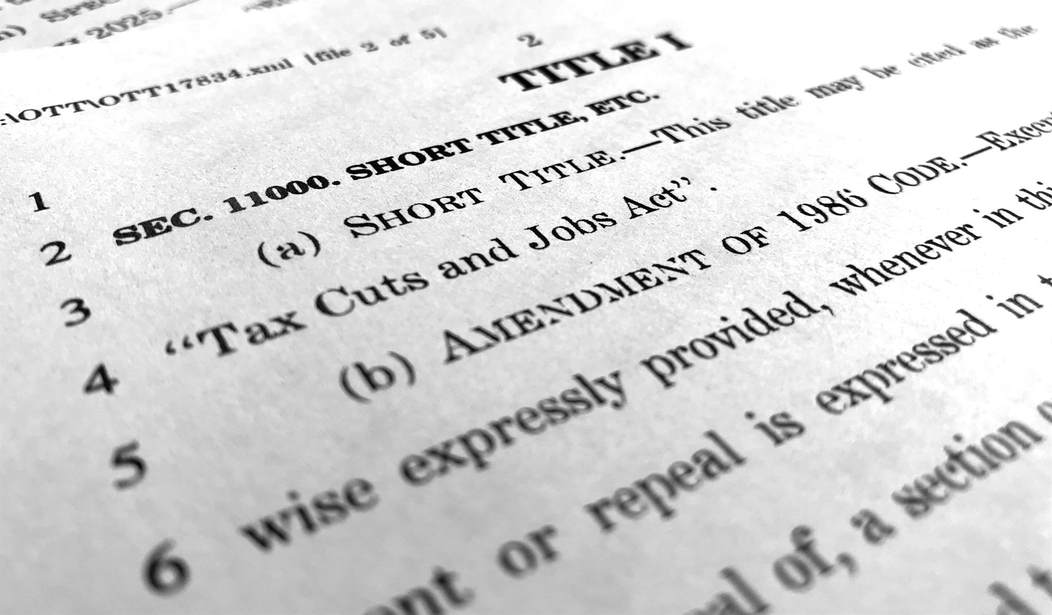In Washington, facts are often the first to fall victim to political agendas—and few issues highlight this better than the ongoing debate over President Trump’s 2017 Tax Cuts and Jobs Act (TCJA). As the expiration date for the TCJA’s individual income tax cuts approaches, progressive lawmakers and their allies in the media are dusting off their old, discredited talking points in a last-ditch effort to sway public opinion.
We’ve heard it all before: The TCJA was supposedly a “handout to the rich” and a “billionaire tax cut is a scam” designed to “take money from regular people.”
The truth? It’s none of those things.
Earlier this month, I co-authored a study for The Heartland Institute, relying on the most up-to-date IRS data available. Our mission was simple: Determine whether the tax reform law still delivers savings to American families.
What we discovered is stunning. Low and middle-income earners experienced the largest percentage decline in their tax bills since the TCJA went into effect. The middle class, not the wealthy, has been the biggest beneficiary of the Trump tax cuts. However, unless Congress acts soon, those savings will disappear by the end of 2025.
By analyzing IRS data from 2017 to 2022, we calculated the average income taxes paid by filers in each IRS-defined income bracket. Since TCJA took effect in 2018, comparing pre and post-reform data gave us a clear view of the law’s impact.
While every income group saw a decrease in tax liability, the steepest percentage reductions went to Americans earning less than $75,000 annually.
Consider this: From 2017 to 2022, filers earning between $30,000 and $40,000 saw their tax bills decline by 21.4 percent.
Filers earning $40,000 to $50,000 paid 18.8 percent less in 2022 than they did in 2017.
For the $50,000 to $75,000 income group, tax bills dropped by 16.5 percent.
In stark contrast, every bracket at the $500,000 level or above also experienced a decline, but the reductions amounted to less than 10 percent for each income group. For example, those earning $1.5 million to $2 million saw a reduction in the amount of taxes paid of just 4.1 percent.
Recommended
These tax rate reductions amounted to big savings for filers with even modest tax bills. Most filers who pay at least $4,000 a year in federal income tax have saved thousands because of the TCJA.
Between 2018 and 2022, households making between $50,000 and $75,000 pocketed $4,516 in additional income because of the Trump tax cuts. For those earning $75,000 to $100,000, the number climbed to $5,923. And Americans making $100,000 to $200,000? They saved an incredible $9,638.
And that’s only counting through 2022.
To estimate savings through 2024, we projected the trend forward using consistent annual figures. The outcome? We found that from 2018 to 2024, tens of millions of middle-class filers saved between $6,322 and $13,494.
Perhaps most incredible of all, our study shows that the same law that the left demonizes as a giveaway to the wealthy actually shifted the tax burden further up the income scale.
By examining how much of the overall tax load each bracket bore in 2017 compared to 2022, we discovered that households earning less than $200,000 paid a smaller share of all personal income taxes after the TCJA. Meanwhile, those making more than $200,000 ended up footing a larger share of the bill.
Congress is now considering whether to extend the TCJA’s personal income tax cuts. When the tax reform law was passed in 2017, lawmakers made the tax cuts for businesses permanent, but the individual tax cuts were passed as temporary provisions to help get the bill through the Senate’s reconciliation process. The individual income tax cuts in the TCJA will expire at the end of the year, unless Congress acts now.
This fight isn’t about partisanship or political loyalty. It’s about whether we continue to punish success and squeeze working families—or finally embrace policies that give Americans room to thrive.
The evidence is overwhelming. The TCJA worked. And it worked best for the people who needed it the most.
Now it’s time for Congress to do the right thing: make the wildly successful individual tax cuts included in the Tax Cuts and Jobs Act a permanent part of America’s tax code.
Justin Haskins is a New York Times bestselling author, president of Our Republic, and a senior fellow at The Heartland Institute.

























Join the conversation as a VIP Member